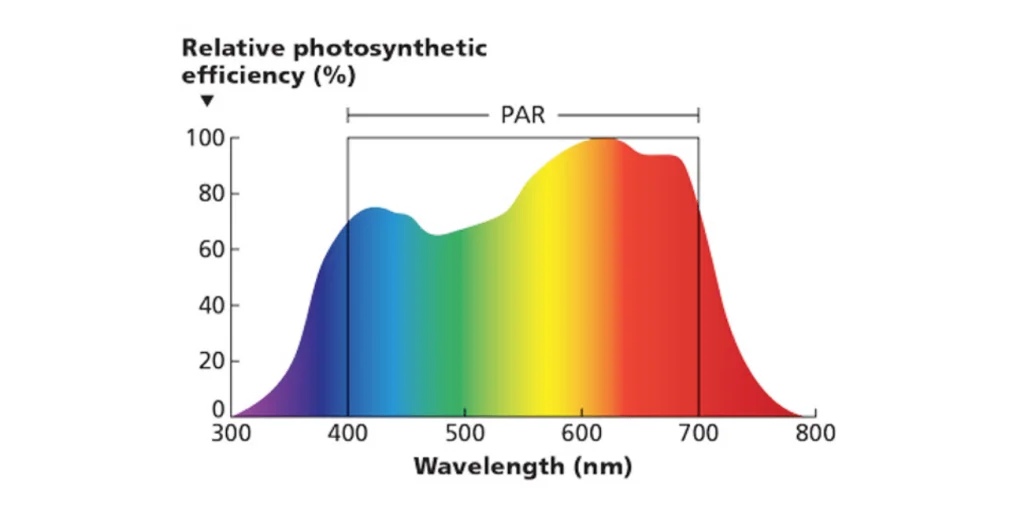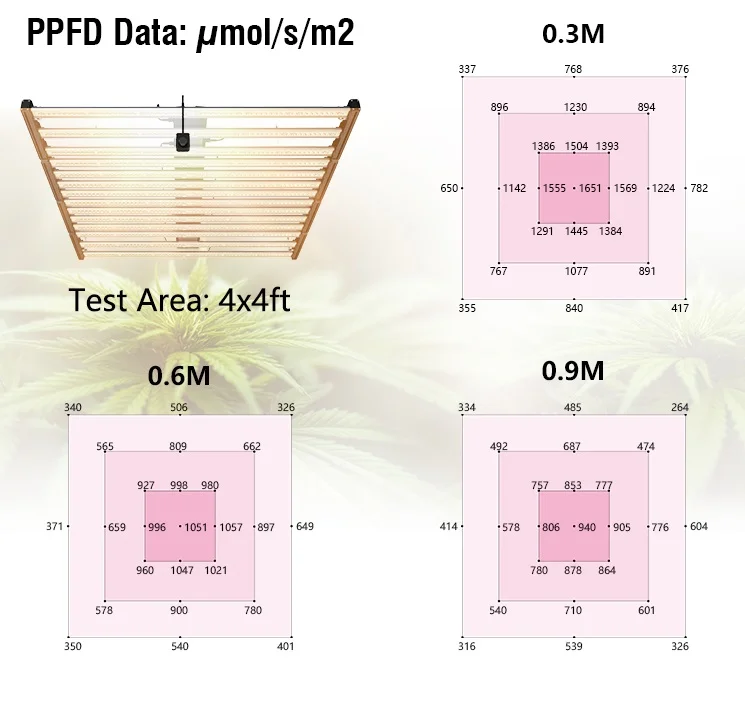HORTICULTURE LIGHTING METRICS
Horticulture Lighting Systems: Understanding The Numbers
If you have been looking into LED horticulture lighting systems for your plant development facility, you have probably been inundated with a number of metrics that lighting manufacturers use to promote their goods. One of these metrics is PAR, which stands for photosynthetically active radiation.
Watts, lumens, LUX, foot candles, PAR, PPF, PPFD, and photon efficiency are some of the terminology and acronyms that you can come across in your research. Even while each of these phrases is technically associated with lighting in some way, only a handful of them really reveal the essential parameters of a horticulture lighting system.
This article will assist growers understand which metrics are appropriate to horticulture lighting systems and which ones are not by providing definitions of the terminology and acronyms that are used, correcting some frequent misconceptions, and pointing out which metrics are not applicable.

HUMANS USE LUMENS
Light is seen extremely differently by plants and humans. In well-lit environments, photopic vision is used by humans and many other creatures to see colour and light. The photopic response curve, from which the unit of measurement lumens derives, is a model of human eye sensitivity in well-lit environments (Figure 1).
As you can see, the bell-shaped photopic response curve demonstrates how green light is far more sensitive to people than blue or red light. For commercial and domestic lighting applications, LUX and foot candle metres measure the intensity of plant growth lights (using lumens), with the main distinction between the two being the unit of space they are measured across (LUX uses lumen/m2 and foot candle uses lumen/ft2).
Even if you are measuring the same intensity of PAR, using LUX or foot candle metres to measure the light intensity of horticulture lighting systems will result in variable readings based on the spectrum of the plant growth lights source.
The underrepresentation of blue (400–500 nm) and red (600–700 nm) light in the visible spectrum is the main issue with using LUX or foot candle metres to measure the light intensity of horticulture lighting systems.
Red and blue light are quite effective in triggering photosynthesis in plants, even though humans may not be very good at seeing light in these areas. This is the reason why measures for horticulture illumination such as lumens, LUX, and foot candles should never be employed.

PAR
Active radiation for photosynthesis is known as PAR. The 400–700 nm visible range of light wavelengths known as PAR light is what fuels photosynthesis (Figure 1). The word ''PAR'' is used often (and incorrectly) in connection with horticultural lighting. A measurement or ''metric'' unit like feet, inches, or kilogrammes, PAR is NOT. Instead, it specifies the kind of light required to facilitate photosynthesis. The key indicators to pay attention to are PAR light quantity and spectral light quality. (Click here for additional information on spectral light quality.) The main tool for measuring the plant growth lights output of horticultural lighting systems is a quantum sensor. These sensors may be used in conjunction with a light metre to detect immediate light intensity or a data logger to monitor cumulative light intensity. They operate by utilising an optical filter to provide a homogenous sensitivity to PAR light (Figure 1).
When looking at horticulture lighting systems, you should pay particular attention to the answers to the following three questions:
How much photosynthetic photon flux (PAR) is produced by the fixture?
How much photosynthetic photon flux density (measured as instantaneous PAR from the fixture) is accessible to plants?
How much energy does the fixture consume to provide PAR to your plants? (measured as Photon Efficiency).
These questions are addressed using the following three main metrics:
PPF
Photon flow from photosynthesis (PPF). PPF calculates the total amount of PAR that a lighting system generates per second. An integrating sphere, a specialised tool that collects and measures almost all photons released by a lighting system, is used to take this measurement. PPF is measured in micromoles per second (mol/s), which is the standard unit. Although this is likely the second most crucial measure for evaluating a horticulture lighting system, most lighting manufacturers don't offer it. While PPF is a crucial parameter if you want to determine how well a lighting system produces PAR, it does not tell you how much of the measured plant growth lights really reaches the plants.
PPFD
Photosynthetic photon flux density is known as PPFD. The quantity of PAR that reaches the plant is measured by PPFD, or, in the words of a scientist, ''the number of photosynthetically active photons that fall on a given surface per second.'' PPFD, which is measured in micromoles per square metre per second (mol/m2/s), is a ''spot'' measurement of a particular area of your plant canopy. It is crucial to take the average of numerous PPFD measurements at a certain height if you want to determine the real light intensity of a lamp across a set growth area (for example, 4′ x 4′). Lighting companies significantly exaggerate the actual plant growth lights output of a fixture when they simply report the PPFD in the centre of a coverage area. Since horticulture plant growth lights are often brightest in the centre, and light levels decrease when measurements are taken towards the borders of the coverage area, a single measurement does not reveal much. (Beware the buyer. Data from PPFDs may be readily manipulated by lighting manufacturers. The measuring distance from the light source (vertical and horizontal), the number of measurements included in the average, and the min/max ratio must all be disclosed by the manufacturer in order to guarantee that you are obtaining accurate PPFD readings across a specific growth region. For each of our lighting systems, Luxint consistently provides the average PPFD over a specified growth area at a suggested mounting height.
Photon Efficacy
The term ''photon efficacy'' describes how well a horticulture lighting system transforms electrical energy into PAR photons. Total electrical watts or watts per square foot are two common metrics used by manufacturers of horticulture plant growth lights to quantify light intensity. However, given that watts are a statistic indicating electrical input rather than light output, these measurements actually don't tell you anything. The PPF of the light and the input wattage may be used to determine how well electrical energy is converted into PAR by a horticulture lighting system. Recall that the Joule per second (J/s) unit is used to measure watts, not PPF, therefore the unit becomes mol/J when the seconds in the numerator and denominator cancel out. A lighting system is more effective at turning electrical energy into PAR photons when this value is greater.
CONCLUSION
You need to be aware of the PPF, PPFD, and photon efficiency to make wise purchase selections of plant growth lights so that you may spend your money on the best horticulture lighting system to achieve your cultivation and business objectives.
However, one shouldn't base a purchase choice just on these three measures. Other factors that must be taken into account include form factor and coefficient of usage (CU).
The takeaway is that PPF, PPFD, and photon efficiency are the correct measurements for plant growth lights used by scientists and industry leading horticulture lighting firms. All aspects need to be utilised in conjunction to identify the most suitable systems depending on your cultivation and commercial objectives.
You won't be able to determine the system's genuine effectiveness if a firm doesn't provide you the right measurements for horticulture lighting, and they shouldn't be selling horticulture lighting systems in the first place. Rutgers and Utah State University have confirmed that Luxint Bioengineering is one of the leaders in photosynthetic photon efficiency and consistently reports these values in product documentation.
Luxint plant growth lights are becoming more popular due to its great effect in farming.
Contact us for any help in choosing the right plant growth lights for your farming.



